09/09/25
Western Governors deliver 2025 State of the State addresses
.png)
The "word cloud" above was created using the topics frequently mentioned by the Governors in their State of the State addresses.
Several Western Governors are kicking off the 2025 legislative sessions in their states by delivering State of the State addresses to highlight their policy priorities going into the new year.
On Monday, January 6, Idaho Governor Brad Little delivered his seventh State of the State address to assembled legislators. His address largely focused on his Keeping Promises plan, which aims to continue delivering for the needs of Idahoans while promoting fiscal responsibility in the state. 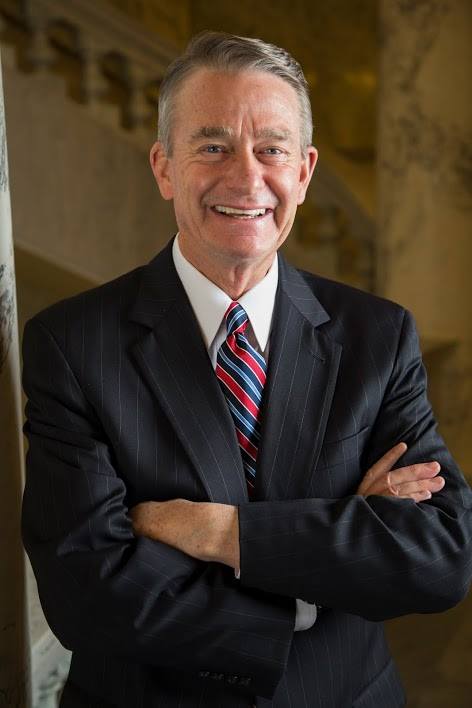
In addition to $100 million in new tax relief measures, Governor Little announced major investments in education, workforce development, transportation, wildland firefighting, and more.
For education, Governor Little pledged $150 million to Idaho’s public schools to address mental health, rural education, literacy, and school safety. He also announced another $50 million to help expand education options for all Idaho families.
The Governor also emphasized his continued support for wildland firefighting efforts, including his push to hire and retain wildland firefighters through additional bonuses and funding for the state’s fire suppression account.
Given Idaho’s rapid growth, Governor Little addressed essential infrastructure investments in the state’s roads, bridges, and housing stock. He noted efforts to expand housing supply through regulatory and permitting reform to support plans to build thousands of new homes for Idaho families.
Along with infrastructure, Idaho is successfully investing in its skilled workforce through the Launch program, which is helping students access education or training opportunities after high school to enter essential careers that will help Idaho keep up with rapid growth.
Read a full transcript of Governor Little’s 2025 State of the State address here.
In North Dakota, Governor Kelly Armstrong delivered his first State of the State address on Tuesday January 7, just weeks after taking the oath of office on December 15. 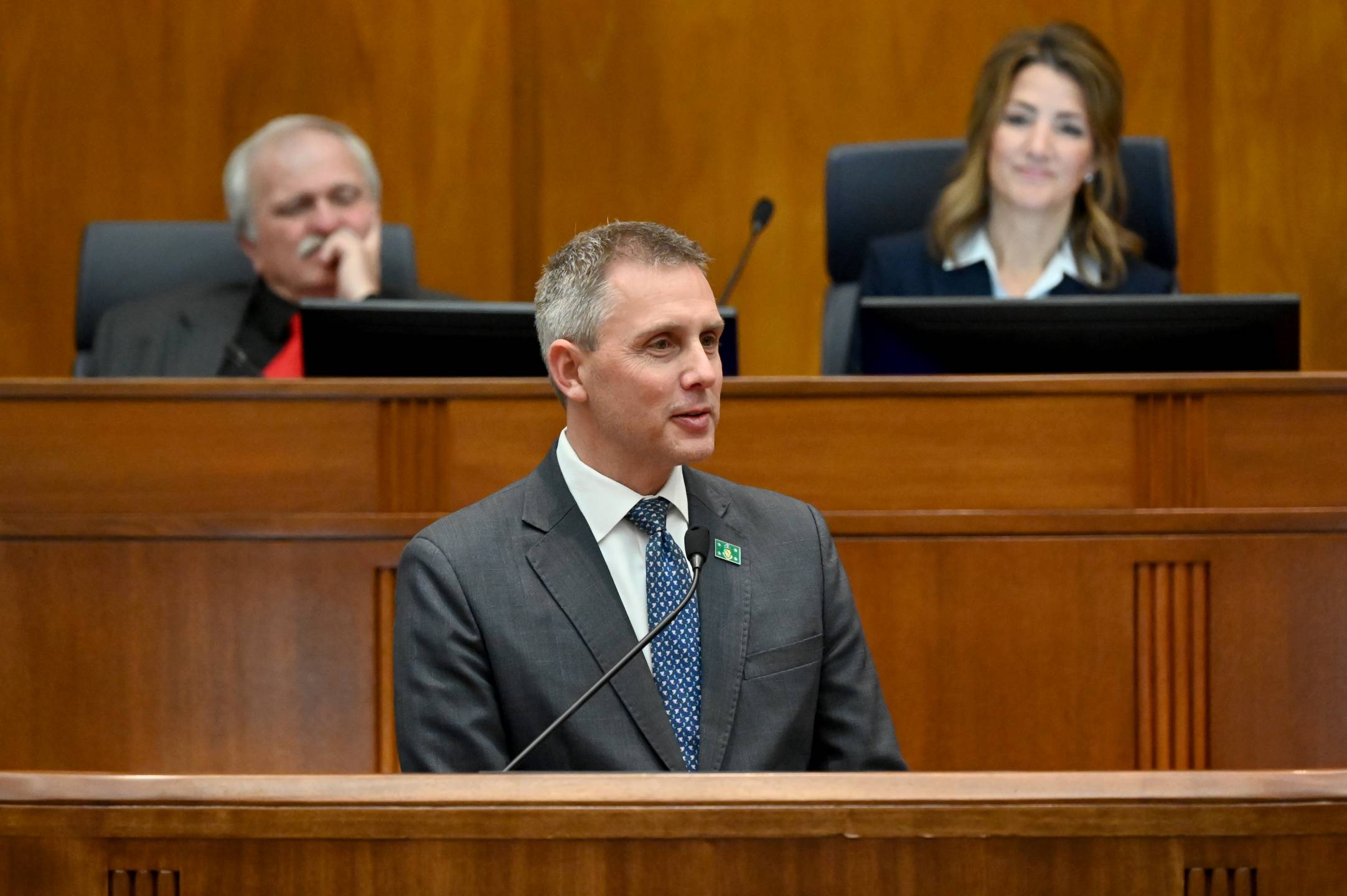
To help make home ownership more accessible for North Dakotans, Governor Armstrong proposed property tax reforms for the state. His plan would provide property tax relief to current residents and help draw newcomers to the state.
“Over the past year, I’ve spent time with constituents across our state, from east to west, in ag towns and oil towns … in communities large and small,” said Governor Armstrong. “And I can say with full confidence that property tax is their top priority – and it should be ours.”
He also pledged to carry on the work of former First Lady Kathryn Burgum on mental health and addiction recovery. To expand on those efforts, Armstrong announced a new Cabinet position dedicated to recovery and re-entry and nominated Jonathan Holth, the former director of the Burgum’s Recovery Reinvented initiative.
Governor Armstrong also stressed the importance of quality education in North Dakota, from K-12 programs through the state’s higher education institutions. He committed to making the education system more accessible and a better reflection of the state’s workforce needs, and he announced a budget increase to $50 million to fund the state’s Challenge Grants, which help support students with scholarships.
He also promised pro-agriculture policies to help support North Dakota farmers and producers, including support for value-added agricultural commodities and Farm-to-School programs.
Read Governor Armstrong’s State of the State address in full here.
Colorado Governor Jared Polis delivered his seventh State of the State address on Thursday, January 9.
In his address, Governor Polis put particular emphasis on the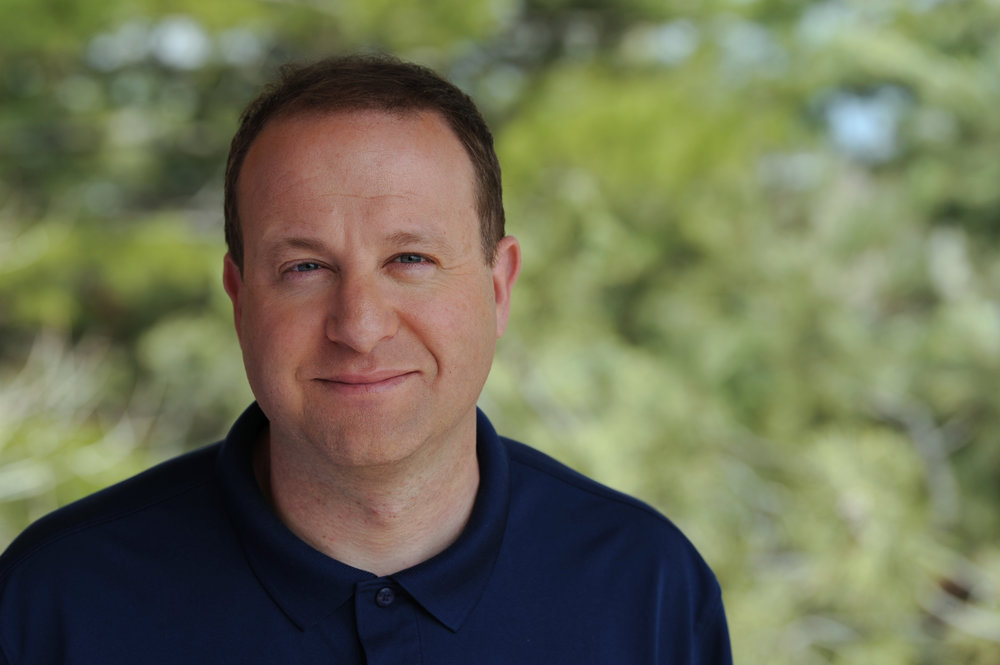 state’s work to address the housing crisis. He highlighted ways to increase the state’s housing supply through strategies such as streamlining the development of modular housing, opening up the option to build accessory dwelling units, building housing near transit and job centers, and other creative strategies.
state’s work to address the housing crisis. He highlighted ways to increase the state’s housing supply through strategies such as streamlining the development of modular housing, opening up the option to build accessory dwelling units, building housing near transit and job centers, and other creative strategies.
He also called on lawmakers to address the high cost of homeowners insurance and expand insurance access so that every Coloradan can get the insurance that they need at an affordable price.
In addition to housing, the Governor announced new steps to expand Colorado’s transit system, including $90 million in federal funding to support passenger rail expansion on the Front Range and expanded passenger rail options between Denver and the state’s popular high country recreation areas.
On health care, Governor Polis emphasized his successful efforts to save people money by capping the price of insulin, passing bipartisan reinsurance to reduce rates, and passing price transparency legislation. He called for continued efforts to lower prescription drug prices and prevent the cost of health care from spiking.
Governor Polis also highlighted his work and goals for education, including Colorado’s universal preschool program, which helped launch the state from 27th to 7th in the nation in preschool enrollment. He also pledged to target “education deserts” in the state to support students who have fallen behind.
Read the Governor’s State of the State address in full here.
On Monday, January 13, Arizona Governor Katie Hobbs delivered her third State of the State address as Arizona legislators kick off the 2025 legislative session.
Governor Hobbs spoke at length about her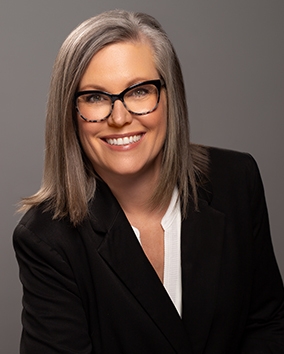 efforts to bring down the cost of housing and home ownership for Arizonans by cutting red tape, investing in affordable housing programs, extending the Low-Income Housing Tax Credit, and other strategies.
efforts to bring down the cost of housing and home ownership for Arizonans by cutting red tape, investing in affordable housing programs, extending the Low-Income Housing Tax Credit, and other strategies.
The Governor also announced that the Arizona Is Home program, which she launched last year, will double the number of first-time homebuyers who receive financial assistance for home purchases. She also called on legislators to fully commit to ending veteran homelessness in Arizona in the next decade.
Governor Hobbs touted the BuildItAZ initiative, which is creating opportunities for thousands of Arizonans to build high-demand skills through construction and trades apprenticeship programs. She also emphasized her state’s leadership in building the U.S. semiconductor industry, including through her recent announcement of a CHIPS Act investment to create Arizona’s first national laboratory and one of the country’s three flagship semiconductor research and development facilities.
Since Governor Hobbs took office, she has helped add nearly 200,000 jobs to Arizona’s economy.
The Governor also addressed water security for the state and committed to bipartisan reform to protect groundwater. As part of her push to protect and conserve water, she highlighted innovative efforts to support growth and build essential housing developments that use less groundwater.
Read the Governor’s State of the State address in full here.
Montana Governor Greg Gianforte delivered his third State of the State address on January 13 to a joint session of the Montana Legislature.
Governor Gianforte addressed the need to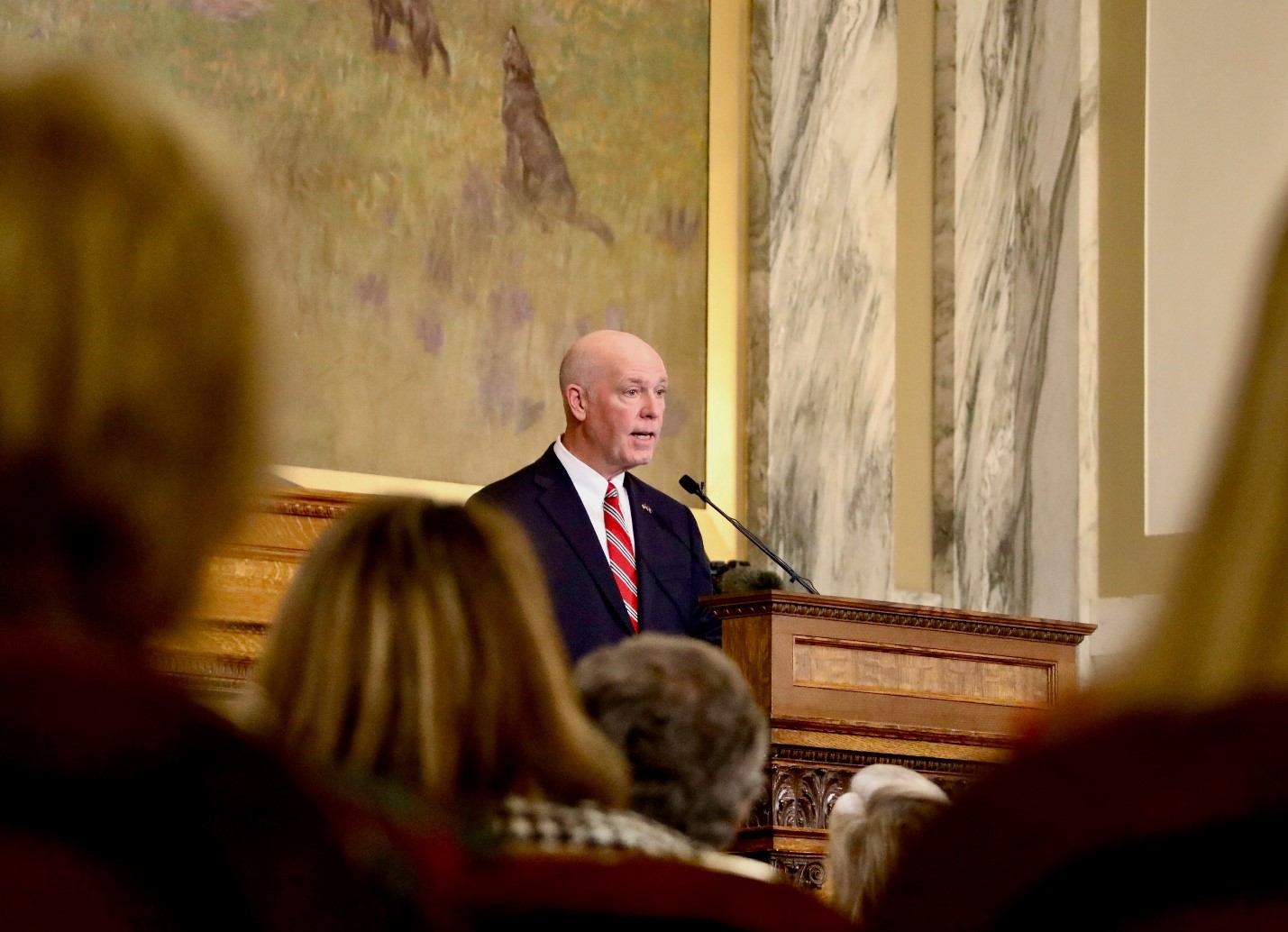 support Montana’s education system by boosting teacher pay through a $100 million investment via the TEACH Act, as well as by creating distraction-free school environments and increasing the popular Big Sky Scholarship Program to $6 million.
support Montana’s education system by boosting teacher pay through a $100 million investment via the TEACH Act, as well as by creating distraction-free school environments and increasing the popular Big Sky Scholarship Program to $6 million.
The Governor also announced new funding for infrastructure and disaster resiliency projects. These include an additional $10 million for bridge repairs in the state, with the goal of repairing 500 bridges in the next five years. He also announced a $100 million investment in a local disaster resiliency fund to support projects that protect people and property from future disasters.
Governor Gianforte highlighted Montana’s fast-growing economy, noting that the state has seen wages grow at the second-fastest rate in the country over the past four years.
Rapid growth, however, has outpaced the growth in housing stock in Montana, leading to a housing crisis that is familiar to many western states. Governor Gianforte committed to addressing the need for more housing by launching the Housing Task Force in 2022, which has developed substantial recommendations to increase housing supply and bring down housing costs.
One particularly bright spot that the Governor noted was the HOMES program, which has led to the construction of nearly 1,000 new homes. He called for an additional $100 million investment in the program to keep building necessary new homes.
Other highlights from the Governor’s address included ways to support energy production in Montana, strategies to support home ownership by lowering property taxes, and more. Read the full address here.
In Oregon, Governor Tina Kotek delivered her 2025 State of the State address on January 13.
In her address, Governor Kotek touched on many of the most important issues facing the state, including housing and homelessness, behavioral health, education, resilience, and more.
many of the most important issues facing the state, including housing and homelessness, behavioral health, education, resilience, and more.
On education, Governor Kotek highlighted her commitment to student success through early literacy and summer learning programs, as well as a focus on transparency and measurable outcomes in the education system. She recommended a leap forward in funding for Oregon school districts in her 2025 recommended budget, but stressed the need to couple accountability with increased investment.
The Governor also addressed homelessness and noted the state’s progress on the issue. By July, 3,300 Oregon households will have been rehoused, and 24,000 households will have been prevented from experiencing homelessness since the homelessness state of emergency was initiated two years ago.
She also emphasized that the long-term solution to homelessness revolves around attainable housing supply and noted that by this summer, the state will have financed 2,800 affordable housing units and provided infrastructure for more than 25,000 affordable and market rate units.
Governor Kotek highlighted her administration’s successful efforts to bring federal investment to Oregon, including $43 million for habitat restoration, wildfire mitigation, water management, and species conservation. Oregon was also awarded nearly $90 million to expand the Solar for All program and won nearly $200 million from the Environmental Protection Agency to support resilient communities, modernize the energy grid, and lower energy bills.
Read Governor Kotek's State of the State address in full here.
South Dakota Governor Kristi Noem delivered her 2025 State of the State address on January 14, which marked the opening of the 100th legislative session in South Dakota.
With Governor Noem nominated to take the role of Homeland Security Secretary in the incoming Administration, her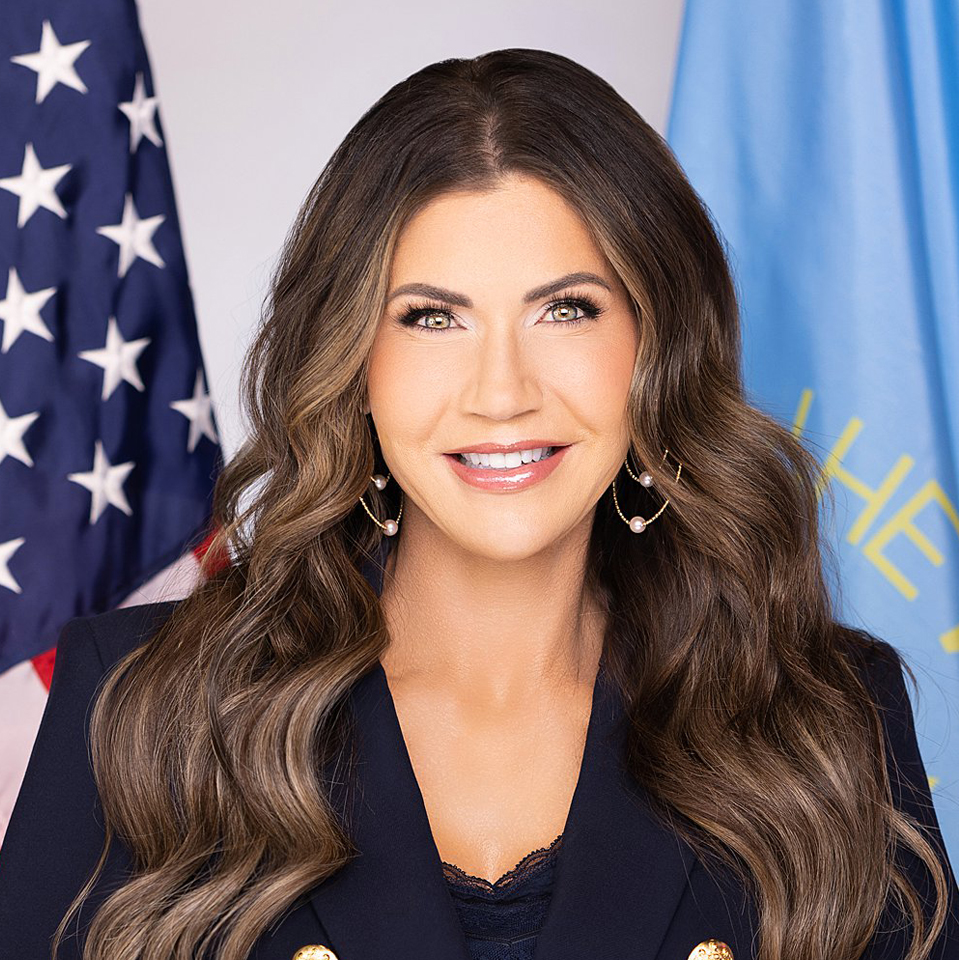 address on Tuesday was likely her last State of the State address as Governor.
address on Tuesday was likely her last State of the State address as Governor.
In her address, Governor Noem laid out a list of the top ten reasons that South Dakota will continue to be an example to the nation. Highlighted in her remarks were her administration’s accomplishments in education, health care, economic growth, infrastructure, agriculture, veterans' affairs, and more.
In education, Governor Noem noted her state’s efforts to improve reading and literacy, as well as efforts to boost teacher pay and implement teacher apprenticeship programs.
The Governor also emphasized her work to improve mental and physical health care access, including through regional mental health facilities and expanded telehealth services. She also noted progress in the state’s health care workforce and noted that the number of nurses working in the state has increased by 1,100 in the past two years.
She also focused on South Dakota’s strong economy and called attention to the state’s 1.9% unemployment rate, the lowest in the nation. She credited strong performance from important industries like agriculture, outdoor recreation, and energy.
Governor Noem closed her address by recognizing Lieutenant Governor Larry Rhoden, who is set to assume the responsibilities of Governor. Read Governor Noem’s full address here.
To close out his third and final term in office, Washington Governor Jay Inslee delivered his 2025 State of the State address on January 14.
In his address, Governor Inslee reflected on the state’s accomplishments over his 12 years in office and charted his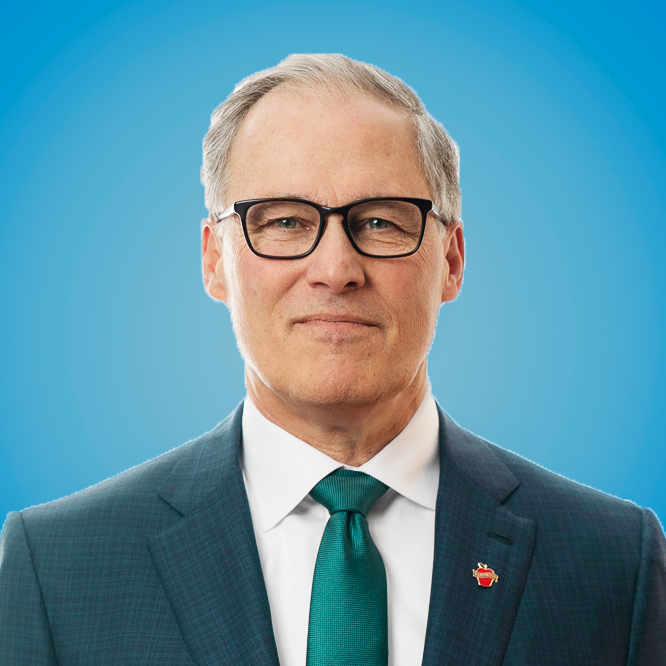 vision for the future of Washington.
vision for the future of Washington.
Governor Inslee highlighted legislative victories such as funding for early childhood education, heat protections for farmworkers, a strategy for youth homelessness, and others that he has overseen during his time in Olympia.
He touched on his successful efforts to meet the rapidly growing demand for behavioral health care, to reduce youth homelessness by 40%, and to pass the state’s largest transportation funding packages in history.
Governor Inslee closed out his address by continuing to look forward to the future of the state of Washington, and he invited Governor-elect Bob Ferguson to continue to build on the progress that has been made over his three terms in office
“Although my administration’s time is at an end, we’ve been running full speed ‘through the tape’ and now we are passing the baton,” said Governor Inslee. “I woke up every morning these last 12 years asking how I could help Washingtonians realize their dreams. And every morning I was filled with confidence in the genius, the compassion and the grand ambitions of our great state of Washington.”
Kansas Governor Laura Kelly delivered her State of the State address on January 15. In her remarks, Governor Kelly touched on key accomplishments and future legislative priorities for the state of Kansas.
Governor Kelly highlighted some of her bipartisan accomplishments on tax relief for residents in her state, including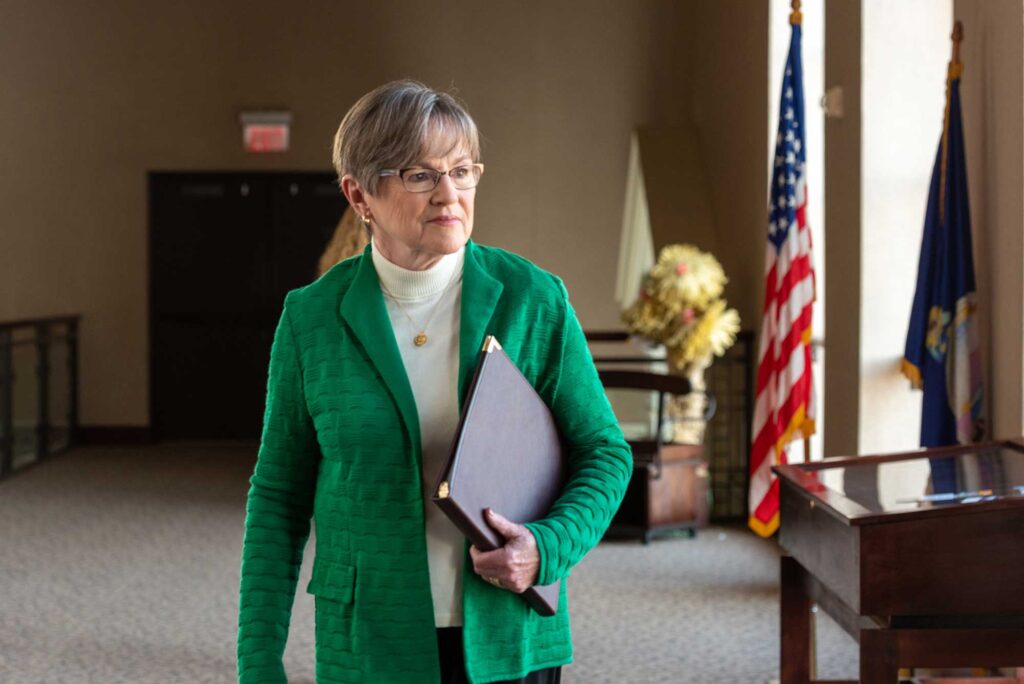 eliminating the sales tax on groceries, eliminating state income tax on Social Security for seniors, and lowering property taxes.
eliminating the sales tax on groceries, eliminating state income tax on Social Security for seniors, and lowering property taxes.
The Governor also called for support for childcare and early childhood services, including pushing for the creation of a new Office of Early Childhood, which would provide a one-stop-shop for young families, childcare providers, and for businesses to access early childhood services.
She also talked about the need to support Kansas public schools and announced that for the seventh consecutive year, her budget proposal will fully fund public schools. Governor Kelly also promised to include free school lunches to over 35,000 Kansas students in her budget proposal, in an effort to address childhood hunger.
Governor Kelly also addressed the need to conserve and protect water supply in Kansas. She called for better water management systems and proposed the creation of an Office of Natural Resources. She also promised to include an additional $30 million in her budget proposal to safeguard water supply, which would bring the state’s total investment in safeguarding water supply to $90 million every year.
Read a transcript of Governor Kelly’s address here and watch a video here.
On January 15, Nebraska Governor Jim Pillen delivered his 2025 State of the State address to Nebraska’s 109th legislature.
Governor Pillen noted the strength of Nebraska’s economy, which boasts one of the nation’s lowest unemployment.jpeg) rates, strong industries like agriculture, financial services, and manufacturing, and a population that is growing faster than it has in decades.
rates, strong industries like agriculture, financial services, and manufacturing, and a population that is growing faster than it has in decades.
In education, the Governor promised to seek a new model for school funding in Nebraska to replace a thirty-year-old system. He also highlighted a bill that would increase the foundation aid per student across the state to tie funding more directly to Nebraska’s students.
Governor Pillen also promised to protect the quantity and quality of water in Nebraska, which he called the “lifeblood” of the state. He called for the establishment of a Department of Water, Energy, and Environment, which would combine the Department of Environment and Energy and the Department of Natural Resources to streamline the mission of stewarding and protecting Nebraska’s water and natural resources.
He also pledged to protect Nebraska’s food producers and consumers from deceptive labeling from out-of-state producers to ensure that Nebraskans know where their food comes from.
Read a full transcript of Governor Pillen’s address here.
On Wednesday, January 15, Nevada Governor Joe Lombardo gave his 2025 State of the State address.
In his address, Governor Lombardo presented his executive budget to lawmakers. In it, he recommended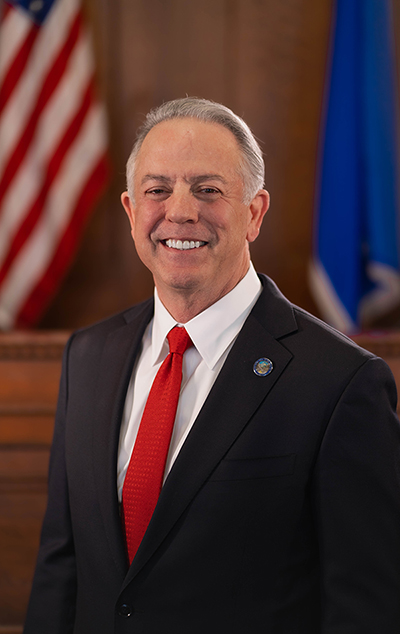 permanent pay raises for teachers, the creation of a Nevada Health Authority, and other priorities.
permanent pay raises for teachers, the creation of a Nevada Health Authority, and other priorities.
He also addressed the state’s housing crisis and pushed for the Nevada Attainable Housing Act, which would reduce fees and foster innovation while incentivizing development and creating more public-private partnerships. It also prioritizes state funding to support $1 billion for new attainable housing units across the state.
In addition, the Governor announced that the state’s Office of Economic Development formally approved the Campus for Hope, a $200 million initiative to provide life-changing resources for those experiencing homelessness.
Governor Lombardo also announced new investments in health care, including doubling the state’s investment in graduate medical education, incentivizing providers to serve in underserved areas, and leveraging telemedicine to expand access to care for all Nevadans. At the heart of the Governor’s efforts is the creation of a new Nevada Health Authority, which would improve Nevada’s purchasing power in health care markets, and boost access to behavioral health services.
Governor Lombardo also promised to prioritize economic growth for Nevada’s businesses that create high-quality jobs, advance clean energy, and address essential needs in the state.
Read the Governor’s remarks in full here and find a video here.
Wyoming Governor Mark Gordon delivered his State of the State address to Wyoming’s 68th Legislature at the commencement of their General Session.
His address touched on key issues such as infrastructure, tourism, energy, education, wildfire, and more.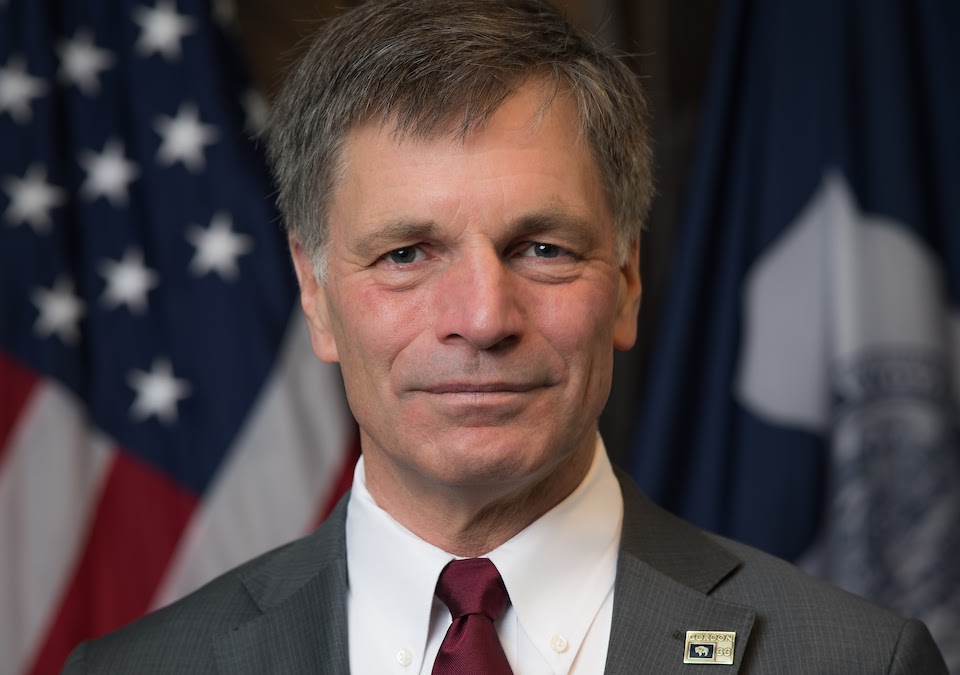
Governor Gordon recognized tourism as one of Wyoming’s most important industries and noted that it is the state’s largest employer. He pledged to continue to maintain Wyoming as a destination state, reminding lawmakers that the outdoor recreation industry’s $2.2 billion contribution to the state’s economy in 2023 represented an essential revenue stream and job creator for Wyoming.
On infrastructure, Governor Gordon recalled the quick and decisive action that was required to repair Teton Pass after a landslide washed out part of the road this past summer. He highlighted more of Wyoming’s recent accomplishments in infrastructure and requested an additional $20 million for the state’s Mineral Royalty Grant Program, which supports communities with necessary infrastructure projects without raising taxes.
This year, a particularly destructive wildfire season cost Wyoming more than $55 million in direct firefighting costs. Governor Gordon noted that the state needs resources not just to fight fires, but also to begin recovery after a fire. He requested $130 million to assist in restoring fire-ravaged lands if – and only if – federal, state, and insurance programs fail to address the needs of those working to restore their landscapes and livelihoods.
Read a full transcript of Governor Gordon’s remarks here and watch a video here.
Hawaii Governor Josh Green delivered his 2025 State of the State address on Tuesday, January 21.
Governor Green began his address by talking about bringing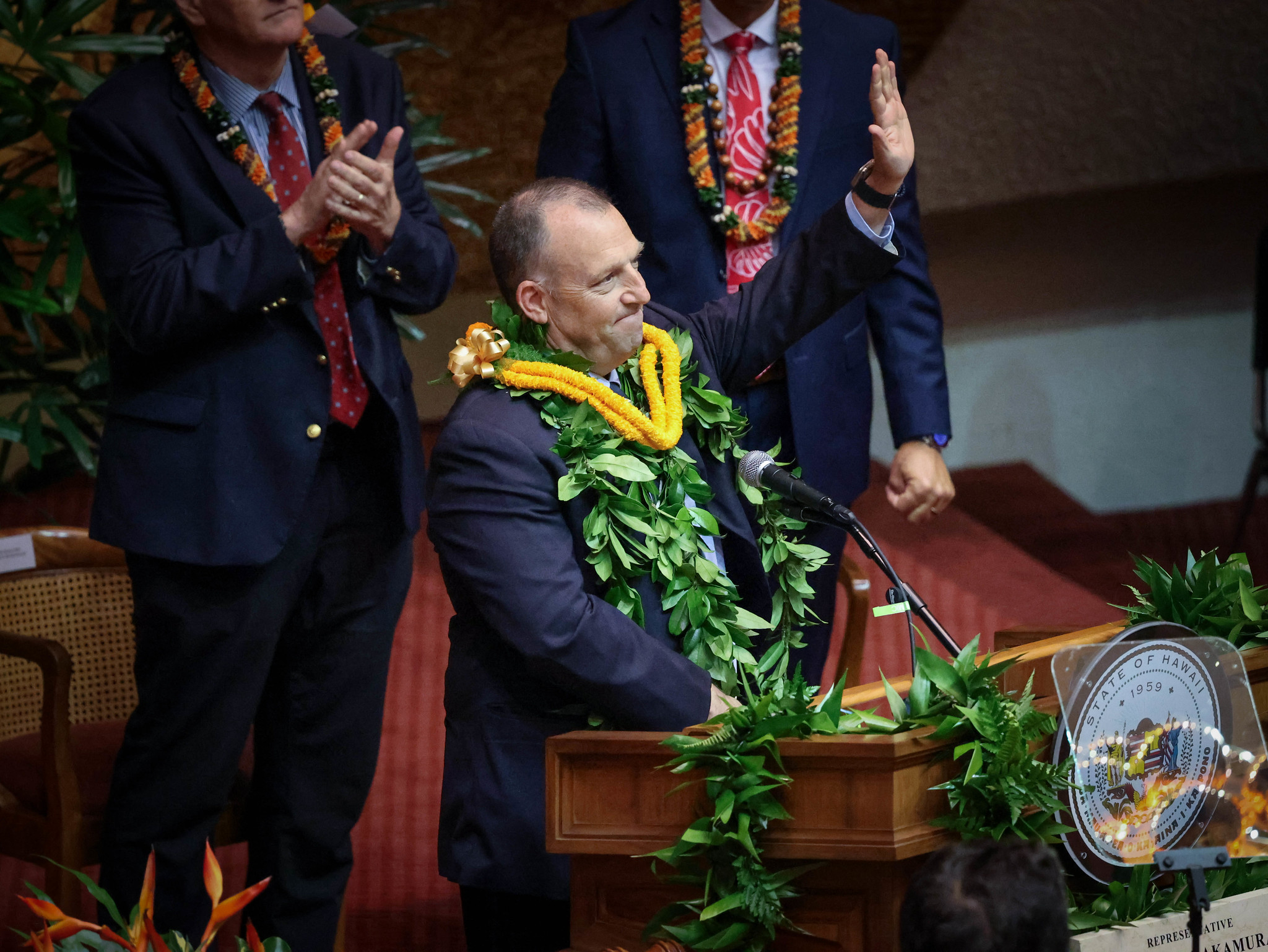 down the cost of living in Hawaii, which is now the highest in the country. He highlighted work to double the earned income tax credit and food tax credit, as well as increase the child tax credit, which saves families $88 million per year. He also spoke about the recent income tax cut for Hawaii families, which will help move Hawaii from having the second-highest tax burden to the fourth-lowest tax burden in the country.
down the cost of living in Hawaii, which is now the highest in the country. He highlighted work to double the earned income tax credit and food tax credit, as well as increase the child tax credit, which saves families $88 million per year. He also spoke about the recent income tax cut for Hawaii families, which will help move Hawaii from having the second-highest tax burden to the fourth-lowest tax burden in the country.
Governor Green also discussed housing and noted that his administration’s emergency housing proclamations have helped accelerate nearly 7,000 affordable housing units in the state. Over the next two years, Governor Green’s administration has requested over $500 million for housing initiatives, including programs to develop more affordable housing and workforce housing.
He also announced plans for 30 tiny home communities – known as kauhale villages – to be completed by 2026, which will provide over 1,500 units for individuals experiencing homelessness.
The Governor also detailed the ongoing recovery efforts following the 2023 Maui wildfires, including investing more than $2 billion in federal disaster relief and $800 million in state funding to support wildfire survivors and rebuild. He announced that 99% of those displaced by the fires have moved into long-term housing, and Governor Green promised to ensure that Maui has all the necessary resources to rebuild.
Read the Governor’s speech in full here and find a video here.
On January 21, New Mexico Governor Michelle Lujan Grisham delivered her seventh State of the State address. In her remarks, the Governor touched on issues such as housing, economic development, childcare, health care, and more.
On housing, Governor Lujan Grisham called for the removal of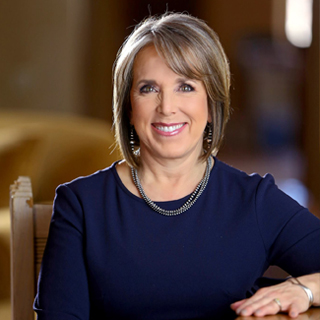 regulatory barriers and red tape to develop housing faster and more efficiently. She also proposed $50 million in development subsidies, new capital investments in roads and water infrastructure, and the creation of a state Office of Housing.
regulatory barriers and red tape to develop housing faster and more efficiently. She also proposed $50 million in development subsidies, new capital investments in roads and water infrastructure, and the creation of a state Office of Housing.
The Governor also asked the legislature for $50 million to fight homelessness through dedicated services such as temporary housing and job training.
Governor Lujan Grisham also touted the state’s new Health Care Authority and noted the Health Care Affordability Fund, which now covers about 65,000 New Mexicans. She announced that the Rural Health Care Delivery Fund has delivered more than $80 million to rural providers and called for an additional $50 million for the Fund, as well as $100 million for behavioral health expansion. Additionally, the state will be sending $1 billion in new funding to rural and at-risk hospitals through the Medicaid provider tax, beginning in March.
The Governor also proposed a state-sponsored wildfire insurance program outside the private market to ensure that nobody in New Mexico is priced out of fire insurance.
Read Governor Lujan Grisham’s address in full here and watch a video here.
On Thursday, January 23, Utah Governor Spencer Cox delivered his 2025 State of the State address. In his remarks, Governor Cox called on the state to build, saying, “my friends and fellow citizens, if there is one thing you take away from my remarks tonight, please let it be this simple refrain: We must build.”
He invoked Utah’s state history to remind legislators that 180 years ago,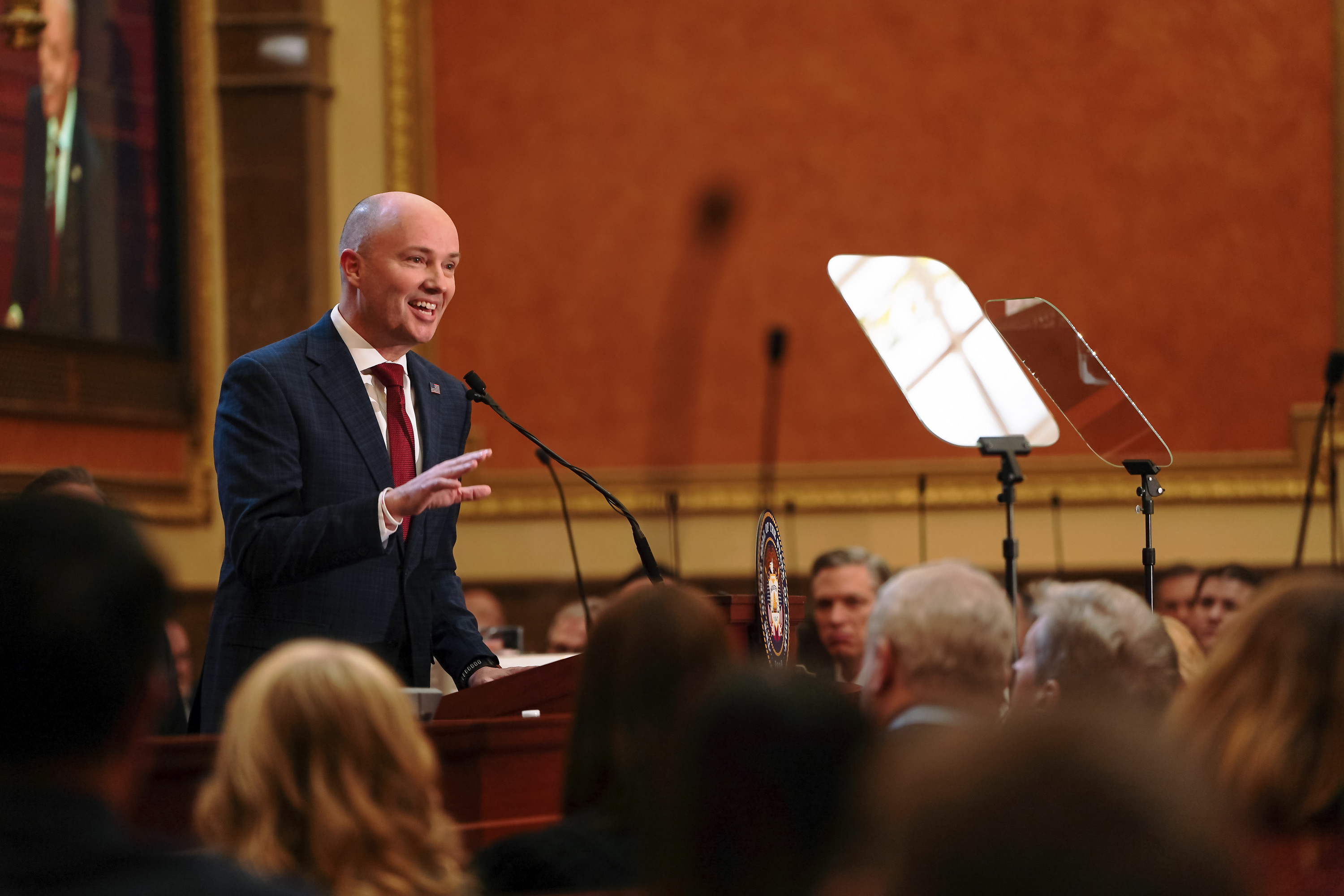 Utah’s pioneers rolled up their sleeves to begin the transformation of the Salt Lake Valley from a barren desert landscape into the humming metropolis it is today. He called for the same industrial spirit to meet today’s challenges in Utah.
Utah’s pioneers rolled up their sleeves to begin the transformation of the Salt Lake Valley from a barren desert landscape into the humming metropolis it is today. He called for the same industrial spirit to meet today’s challenges in Utah.
To do so, he outlined several key policy priorities to address housing, energy, and infrastructure needs.
On housing, Governor Cox called for reforms to the state’s regulatory process to boost housing production. He also emphasized his Utah First Homes program, which plans to build 35,000 starter homes in just five years.
Governor Cox also laid out his plans to promote energy abundance in Utah through new advanced nuclear reactors and other strategies. He promised to help drive energy prices down while making the grid more secure and reliable.
He also called for streamlining Utah’s permitting and approval process for important infrastructure projects while maintaining environmental stewardship.
Read Governor Cox’s remarks in full here and watch his speech here.
On Tuesday, January 28, Alaska Governor Mike Dunleavy delivered his seventh State of the State address. The speech highlighted Alaska’s success in key areas such as energy production, education, economic expansion, and population growth.
Alaska’s population has grown to its highest level since 2017,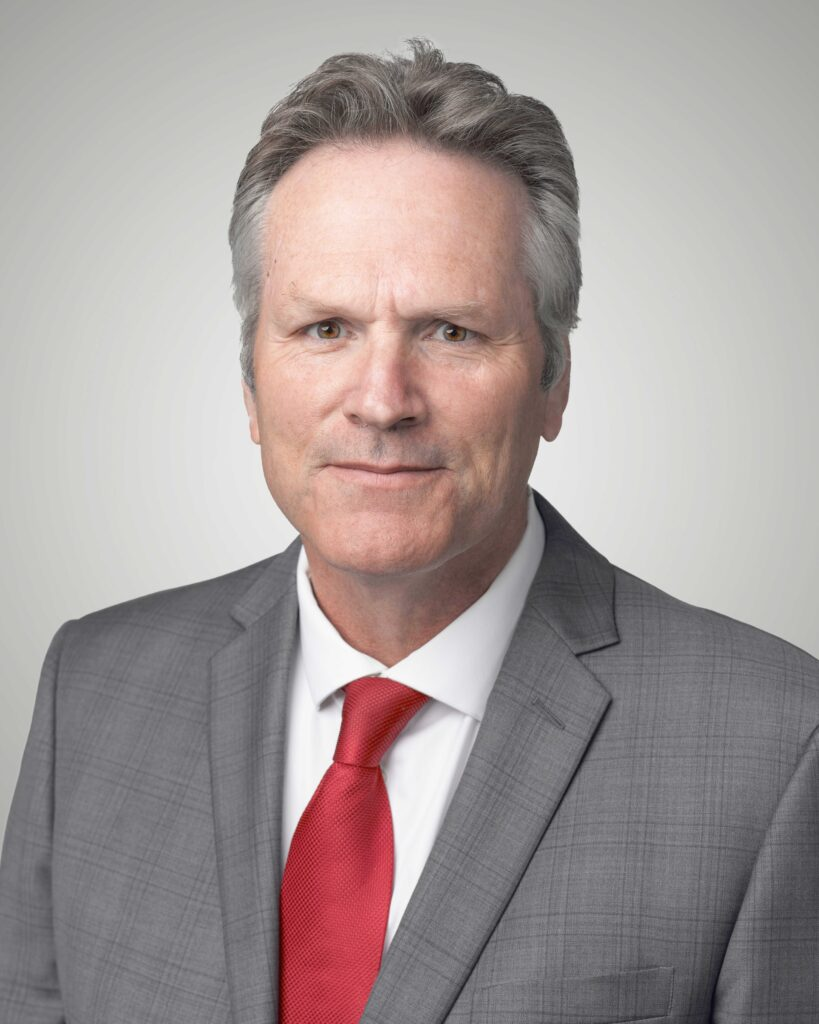 and job and wage growth have followed, with both metrics outpacing the national average. Additionally, Governor Dunleavy noted new energy and transmission developments, which will bring thousands of jobs and as much as $1 billion in new economic activity to the state.
and job and wage growth have followed, with both metrics outpacing the national average. Additionally, Governor Dunleavy noted new energy and transmission developments, which will bring thousands of jobs and as much as $1 billion in new economic activity to the state.
The Governor called on Alaskans to embrace all forms of energy to power Alaska’s future, saying, “we need coal and carbon capture; we need wind, solar, geothermal; and we need to be able to transmit that power wherever and whenever it’s needed.”
Governor Dunleavy also noted steps he is taking to secure agriculture and food production in Alaska, including through the creation of a new Alaska Department of Agriculture.
On education, the Governor highlighted successful programs such as the Alaska READS program, which has helped markedly improve reading proficiency for Alaskan students.
He also noted the state’s efforts to limit spending growth while still providing key investments in education, public safety, energy, and affordability in housing and childcare.
Read Governor Dunleavy’s State of the State address in full here and view a video of the speech here.
On Sunday, February 2, Texas Governor Greg Abbott delivered his 2025 State of the State address. In his speech, Governor Abbott remarked on the state’s strong economy, which ranks among the top states for economic development, new jobs, and starting new businesses.
He also discussed housing affordability and called on the state to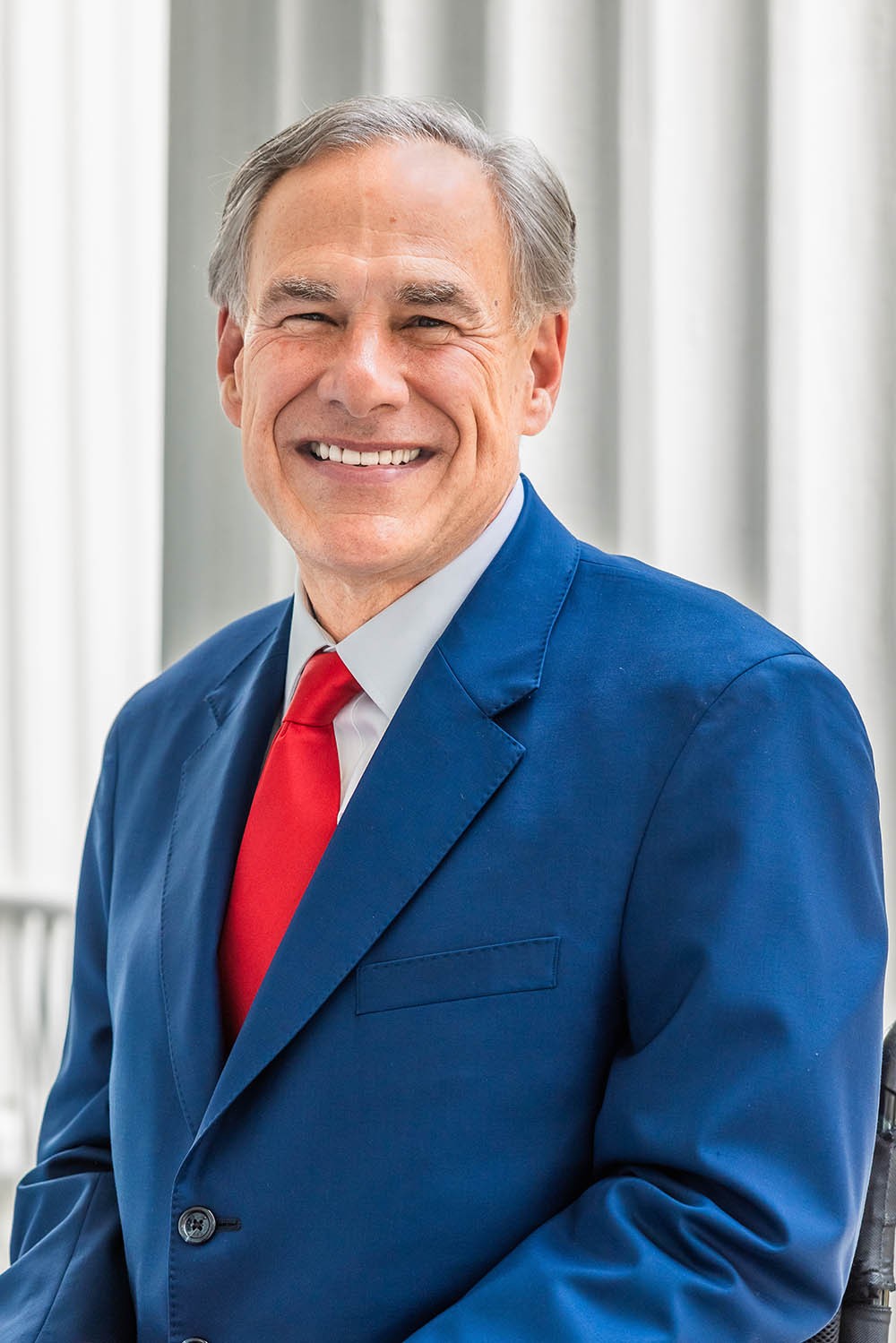 speed up production by cutting red tape and increasing the pace of permitting. He also called for a one-year tax exemption for home improvements like heating and cooling.
speed up production by cutting red tape and increasing the pace of permitting. He also called for a one-year tax exemption for home improvements like heating and cooling.
On healthcare, Governor Abbott called for expanded funding for mental health care, especially in rural corners of the state. He also pledged to expand maternal care in all areas of the state and boost care for seniors and Texans with disabilities.
Governor Abbott also spoke about the need to secure water for the state, and he announced a new water investment that will eclipse last year’s $1 billion investment.
The Governor also touched on the state’s success in boosting power production by 35% over the past four years, and he called on the legislature to add even more power to the grid in this session. He also noted that nuclear power could provide an energy boon for Texas and the country as a whole.
Read Governor Abbott’s State of the State address in full here and watch a video of the address here.
On February 3, Oklahoma Governor Kevin Stitt delivered his 2025 State of the State address to Oklahoma's 60th Legislature.
Governor Stitt talked about the state’s discipline and responsible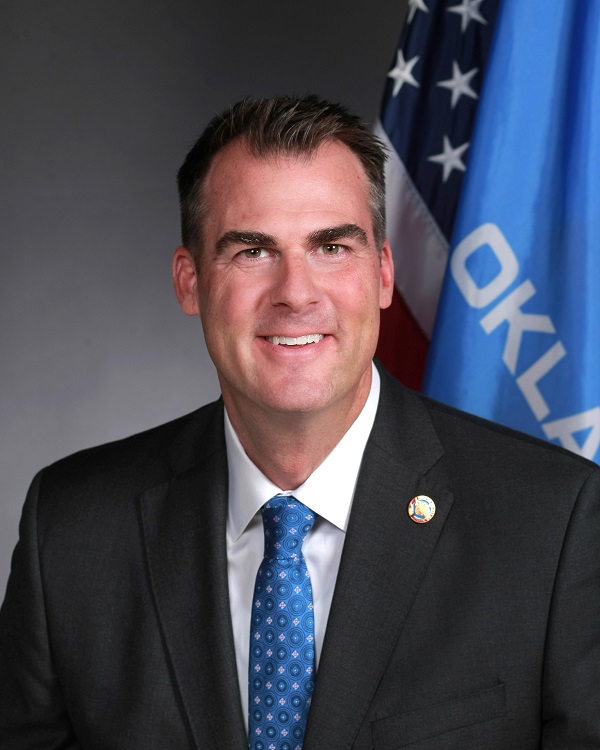 spending over the course of his time in office, which has helped pull Oklahoma out of a period of budget deficits and limited savings. Building on the current strong growth in savings, he proposed a $4 billion savings floor for the state to ensure that it can weather any potential financial storm.
spending over the course of his time in office, which has helped pull Oklahoma out of a period of budget deficits and limited savings. Building on the current strong growth in savings, he proposed a $4 billion savings floor for the state to ensure that it can weather any potential financial storm.
Governor Stitt also laid out four key principles to protect the American Dream for Oklahomans, which include protecting Oklahoma taxpayers; being the best state for business; safeguarding savings; and protecting the Oklahoma way of life.
Already, businesses and investments are moving into Oklahoma, with 274 businesses opening or expanding in just the last year, and entrepreneurs creating 31,000 new jobs. The state has also seen hundreds of millions of dollars invested by private companies, including by tech and manufacturing giants, which continues to boost jobs and economic growth.
Governor Stitt emphasized that supporting and welcoming business growth will help pave the way for excellence in education, infrastructure, and other aspects of life in Oklahoma.
He also noted Oklahoma’s strong energy portfolio and committed to keeping energy affordable and reliable in the state.
Click here to find a full transcript of Governor Stitt’s State of the State address.
On September 9 – the 175th anniversary of California statehood – Governor Gavin Newsom delivered his 2025 State of the State letter to the Legislature.
In his message, the Governor highlighted California’s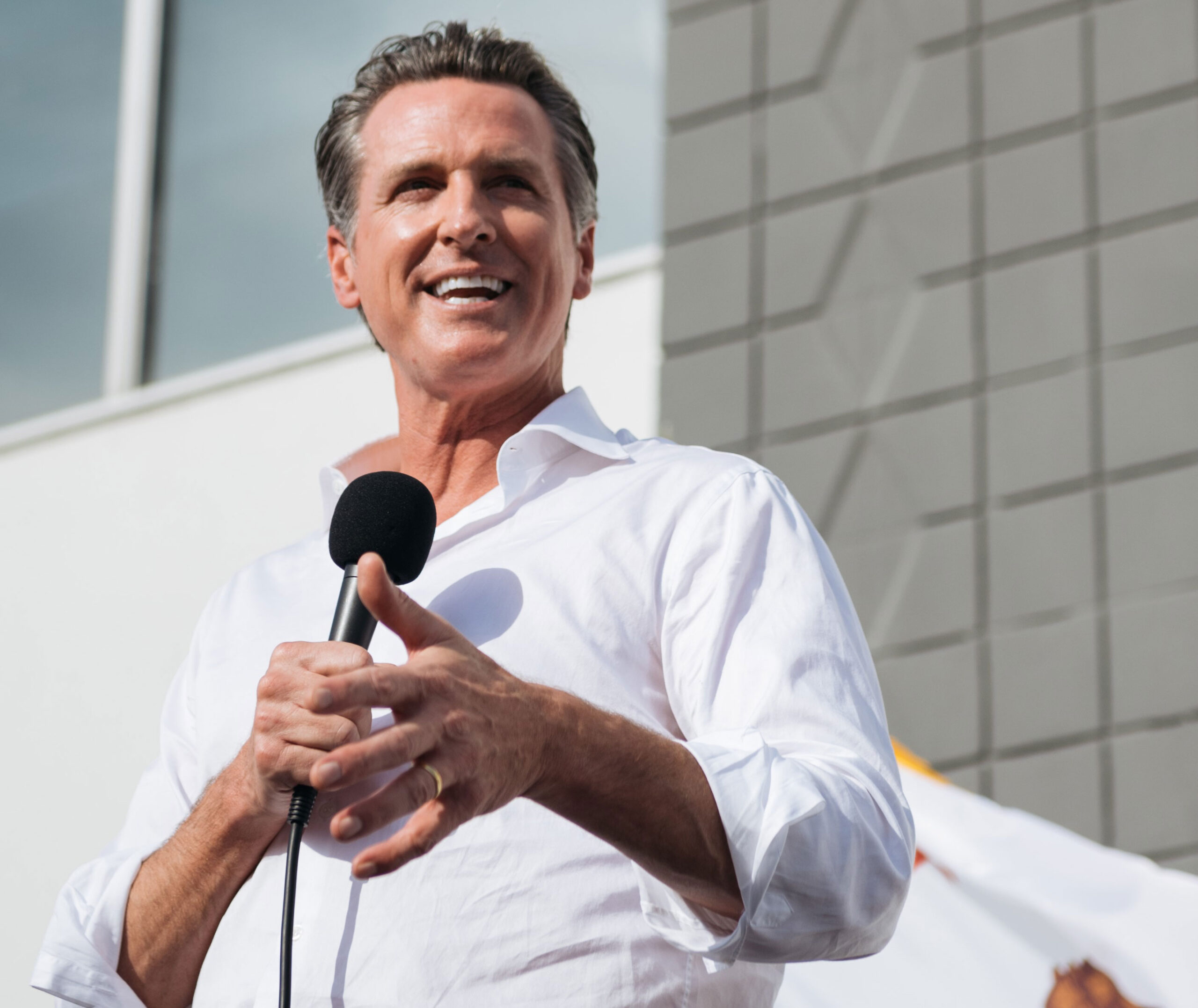 resilience in the face of natural disasters and showcased the state’s leadership in innovation, education, and opportunity.
resilience in the face of natural disasters and showcased the state’s leadership in innovation, education, and opportunity.
He began by noting the Golden State’s immense effort to rebuild stronger following the devastating Los Angeles wildfires at the beginning of the year. Already, homes are rising and communities are rebuilding in places like Altadena and Pacific Palisades.
Governor Newsom also touched on successful education and workforce development efforts in the state, which are helping boost the workforce in critical industries like education, health care, and clean energy.
California is also streamlining the process of building the infrastructure its residents need most – namely housing, broadband, energy, transit, water systems, and forest management projects. On housing, the state has invested tens of billions of dollars in affordable housing and fast-tracked important projects on state-owned land.
The Governor also touched on California’s strong innovative spirit and highlighted its leadership in critical industries like AI, energy innovation, film, and higher education.
To view Governor Newsom’s address and read his full letter, click here.